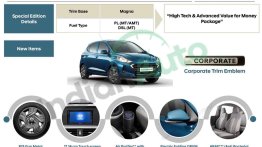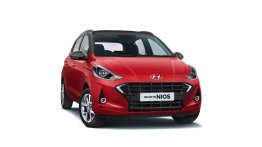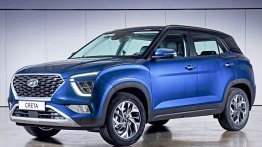Hyundai has pulled the wraps off the Euro-spec Hyundai i10 ahead of its world premiere at the 2019 Frankfurt International Motor Show.
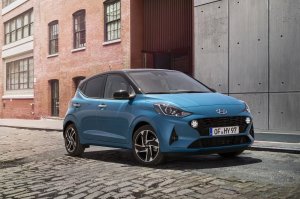
Sporting a new dynamic design, the latest iteration of Hyundai i10 packs an advanced safety kit that sets new benchmark in the segment and a raft of connectivity bits in tandem with the new-age Hyundai cars. First launched in 2008, the i10 has evolved in visual terms. Akin to the previous generation model, the new i10 combines the best of both worlds, accessibility and comfort. The Europe bound third-generation Hyundai i10 has been designed, developed and built in Europe.
Aesthetically, the i10 looks refreshing now, thanks to the new dynamic and sleek design. It also receives dimensional changes, appearing slightly larger than the outgoing version. The roof has also been lowered by 20 mm and the width has been increased too (20 mm). Also optional on the hatchback are the newly designed 16-inch alloy wheels. The styling in front is highlighted by a sporty honeycomb mesh grille and round LED DRLs. Round the back, there are two horizontal crease lines that run into the tail-light graphics.
Moving to the sides, the unique triangular volumes accentuate the width of the car and skew focus on the wheels. Also, there is an X-shaped C-pillar that brings prominence to the flanks. Hyundai has also lowered the drag coefficient marginally to 0.31 from 0.32. It has added three new paint options including Dragon Red, Aqua Turquoise and Phantom Black to the new i10. With this, the hatchback is now available in a total of 10 base exterior colour options. Besides, customers can also avail the optional dual-tone roof – in either red or black. It is worth noting that customers can choose from 22 exterior colour combinations overall.
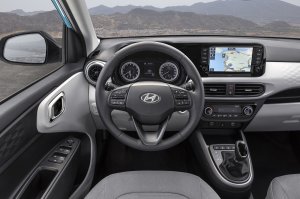
Also Read; Hyundai Grand i10 Nios Launched in India, priced from INR 5 lakh
The insides of the new i10 are youthful and offer great usability. The air-vents have been designed to create extra width inside the cabin. Another vital element is the ‘honeycomb’ 3D patterned décor panel on the dashboard as well as door panels. Keeping with the practical quotient, the designers have carved multiple in-cabin storage points such as glovebox and an integrated open storage compartment placed above the glovebox on the passenger side. Also, there are four different interior colour options available to choose from.
The enhanced wheelbase carves out generous room for occupants in four and five-seat layouts. Hyundai has reduced the beltline at front and rear that allows a broader view of the road to the driver on both sides. The C-pillar obscuration has also been decreased to 11.9 degree from previous 13.1, improving visibility, especially during parking. Another highlight is the cargo volume of 252-litres, one of the best in the segment. Additionally, there are two-stage luggage board and one-hand folding rear seats.
Also Read; Hyundai Grand i10 Nios Vs. Hyundai Grand i10: Design, specs & pricing compared
The 2019 Hyundai i10 also benefits from a large 8-inch colour touchscreen, the largest in the A-segment. This unit is compatible with Apple CarPlay and Android Auto. Wireless charging ensures your smartphones never run out of battery while on the go. Customers can also avail Hyundai’s Connected Car platform (optional), that features its Bluelink telematics. This can be operated through an app, wherein drivers can benefit from safety and security as well as control and connectivity related functions. Find My Car allows drivers to locate their vehicles in a crowded parking area, etc. Customers can get notifications for real-time traffic and weather conditions by choosing the navigation services and receive subscription to the Hyundai LIVE Services.
Safety is paramount and Hyundai has packed the new i10 with a comprehensive safety kit that comprises Forward Collision-Avoidance (FCA), High Beam Assist (HBA), Lane Keep Assist System (LKAS), Driver Attention Warning (DAW) and the Intelligent Speed Limit Warning (ISLW).
The 2019 Hyundai i10 will be available with a 1.0-litre MPi three-cylinder engine and a 1.2-litre MPi four-cylinder engine. In terms of output, the 1.0-litre unit makes 67 PS and 96 Nm of torque and the 1.2-litre unit puts out 84 PS with 118 Nm torque. Both the engines get Idle Stop and Go (ISG) as standard, which helps improve fuel economy and reduce CO2 emissions. 5-speed manual and 5-speed automated manual will be the transmission choices. Also, customers will be able to avail the ECO Pack which includes an adjusted gear ratio, 14-inch wheels and four seats.



















